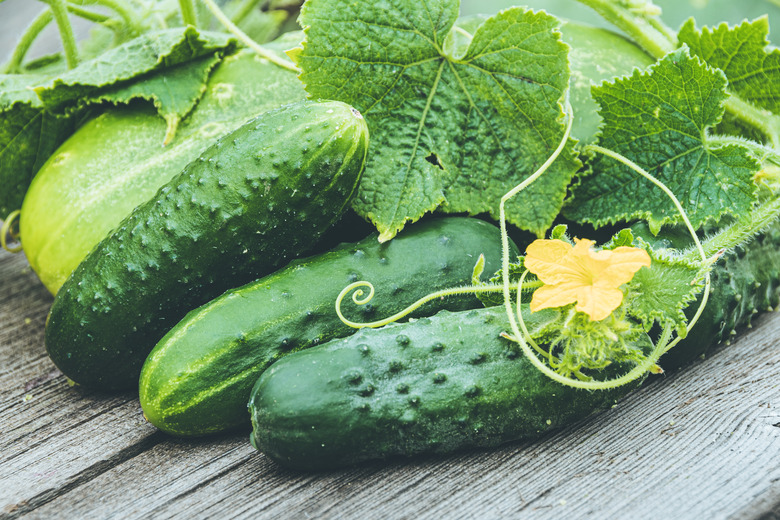How To Treat Cucumber Blight
Things Needed
-
Fungicide
-
Pruning shears
-
Rubbing alcohol
Tip
Talk to the experts at your local home and garden center or county extension office about cucumber varieties that are resistant to blight in your area.
Never use the same fungicide two seasons in a row; blight easily develops resistance to fungicide sprays. Water garden plants at their base, not overhead. Prolonged leaf moisture encourages fungal development. Wash all garden tools and harvesting baskets at the end of the season. Without protective fungicide spray, pruning wounds may become ideal sites for subsequent infestation. If your plants become worse after pruning, dig the plants up and discard them.
Cucumbers are susceptible to a few different strains of blight. This disease most commonly occurs when conditions are consistently moist for 18 hours or more and temperatures remain between 60 and 90 degrees Fahrenheit for a prolonged amount of time. Blight spreads quickly once it infects a crop. Aggressive pruning may stop the disease in its tracks if caught early. However, heavily infested plants are best removed to prevent the spread of fungal spores.
Step 1
Spray the cucumber plants with fungicide registered to treat blight in cucumber plants immediately after the first sign of infection. The plant pathologists at North Dakota State University recommends Anilazine (Dyrene) or mancozeb (Dithane M-45 or Manzate 200). These fungicides work preventatively. They will not work once the infestation is well under way.
Step 2
Prune all cucumber plant material with spots, visible mold or fungal spores or water-logged portions. Completely remove any leaves or cucumbers with pruning shears. Prune stem or vine material back 1 inch into healthy plant material. Wipe your pruning shear's blades down with rubbing alcohol after each pruning cut. Make each pruning cut at the stem's point of origin. Do not leave any stubs behind. They will decay and encourage further infestation.
Step 3
Remove all plant, leaf litter and mulch from the garden bed. The fungal spores responsible for blight overwinter and multiply in decaying material in garden beds.
Step 4
Remove all infected and fallen plant material from the site. Compost it or bury it at least 1 foot under the ground 100 yards away from the garden bed (or as far as possible).
Step 5
Remove all of the cucumber plant material from the bed at the end of the season. Plant another non-cucurbit in the plot next season. Plant next year's cucumbers as far away from last season's cucumber plot as possible. Rotate crop plantings every season to discourage the development of disease.
References
- North Dakota State University Extension Service: Questions on Cucumber; Ron Smith
- North Dakota State University Extension Service: Disease Management In Home-Grown Cucumbers, Melons and Squash; H. Arthur Lamey; June 1991
- Ontario Ministry of Agriculture Food and Rural Affairs: Gummy Stem Blight of Greenhouse Cucumber: G. Ferguson, et al.; October 2009
- Cornell University: Assorted Foliar Diseases of Cucurbits; Thomas A. Zitter; July 1992
